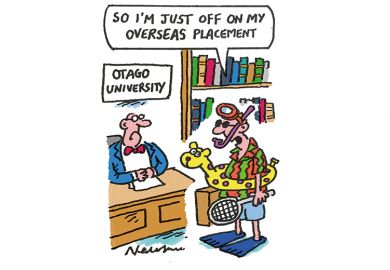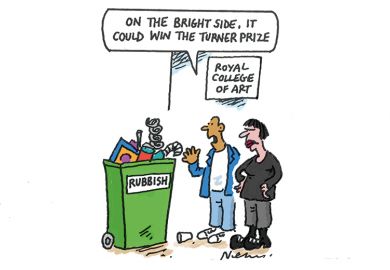
Jeremy Bentham, the 19th-century philosopher and founding father of UCL, has long been one of the institution’s quirkier aspects. His preserved skeleton (covered in clothes from the time and topped by a wax head) was moved to the institution’s Student Centre last year and placed in a sealed museum-grade case in order to be more visible to the public. Now UCL’s new vice-chancellor wants Bentham to be among exhibits to help attract tourists in a bid to further open up the central London institution to the wider public. The Times reported that Michael Spence wants to shift the aloof ivory tower image normally associated with universities by more actively promoting tours of the campus, saying that his last institution, the University of Sydney, was the Australian city’s third most visited attraction. As well as Bentham, it is hoped tourists will be enticed by attractions such as UCL’s Egyptology collection, the Wilkins Building (which stood in for ancient Rome in the film Gladiator) and the Grant Museum of Zoology, whose collection includes dodo bones.
Although journal impact factors (JIFs) have been coming under fire for years as a way to measure the worth of a particular article or a researcher’s publication record, it would be unsurprising if some institutions still didn’t cast half an eye in their direction. But perhaps the tide on their use is finally starting to turn if a major research funder is explicitly telling grant applicants not to mention them. That is the situation with the European Research Council (ERC), which issued guidance in its latest work programme that “properly referenced, field relevant bibliometric indicators” can be used “except the journal impact factor”. JIFs are based on the average number of citations that papers in the journal accrue, something that critics argue can easily be skewed by a small number of highly cited papers.
Archie White has shown what real lifelong learning can look like: at 96, the retired solicitor is thought to have become the UK’s oldest graduate. Inspired by a friend, he has just completed his degree in fine art at East Sussex College, which he “thoroughly enjoyed”, after retiring at the age of 92. According to The Guardian, at the time of submitting his final piece of work to the University of Brighton exam board he was aged 96 and 56 days, just shy of the world record held by Shigemi Hirata, who graduated in Japan five years ago at the age of 96 years and 200 days. Mr White said he felt lucky he had already had a long and enjoyable career, but was worried about the difficulties that might be faced by the current crop of art graduates in the UK.
This year’s National Student Survey has revealed the damage that the pandemic and online learning have done to student satisfaction in the UK. This year’s results show that student satisfaction with the quality of UK university courses has dropped to its lowest level since the NSS was introduced in 2005 – with 75 per cent agreeing that they were satisfied – a fall of eight percentage points on last year. It also found that most learners do not agree that their institution has supported their mental well-being, and the availability of learning resources saw a 12 percentage-point drop in the agreement rate from 86 per cent to 74 per cent. The results for questions around teaching were better, but were still less positive than in 2020.
Gimmicks and other more substantial enticements to persuade applicants to study at a particular university are nothing new in many countries. UK institutions have a growing track record in this area, and US universities probably wrote the rule book on such activity. But they may not be able to beat the parcels being sent out to Chinese students instead of the regular acceptance letters. According to The Times, top universities will be sending out packages that glow, hum and sing songs to applicants following the results of the gaokao, the standardised test used for entry into higher education. Examples include Nankai University, which is said to be including packets of lotus seeds from Jiaxing in a nod to the first Chinese Communist Party congress held in the city 100 years ago. “A well-designed physical acceptance letter is also a good way to convey a university’s cultural characteristics,” according to a Global Times article quoted by The Times.
Register to continue
Why register?
- Registration is free and only takes a moment
- Once registered, you can read 3 articles a month
- Sign up for our newsletter
Subscribe
Or subscribe for unlimited access to:
- Unlimited access to news, views, insights & reviews
- Digital editions
- Digital access to THE’s university and college rankings analysis
Already registered or a current subscriber? Login



